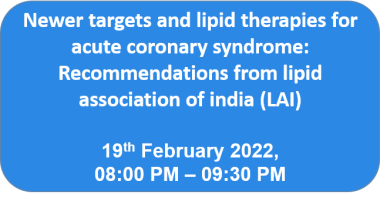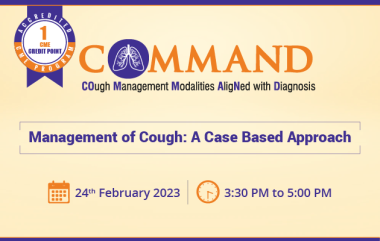test
test
test
test
test
test
test
test
test
test
Brands
Webinars
Videos
Workup in a patient with suspected Allergic Rhinitis
Common tests to perform in a patient with Allergic Rhinitis
Workup in a patient with suspected Allergic Rhinitis
Common tests to perform in a patient with Allergic Rhinitis
Workup in a patient with suspected Allergic Rhinitis
Common tests to perform in a patient with Allergic Rhinitis
Clinico-pathological correlation between Allergic Rhinitis and bronchial asthma
Interrelationship of Allergic Rhinitis and bronchial asthma
Clinico-pathological correlation between Allergic Rhinitis and bronchial asthma
Interrelationship of Allergic Rhinitis and bronchial asthma
Clinico-pathological correlation between Allergic Rhinitis and bronchial asthma
Interrelationship of Allergic Rhinitis and bronchial asthma
Advantage of combination therapy in Allergic Rhinitis
LTRA and H1 anti-histaminic drug combination in Allergic Rhinitis
Advantage of combination therapy in Allergic Rhinitis
LTRA and H1 anti-histaminic drug combination in Allergic Rhinitis
Advantage of combination therapy in Allergic Rhinitis
LTRA and H1 anti-histaminic drug combination in Allergic Rhinitis
Medshorts

Management of the breathlessness-cough-fatigue symptom cluster in lung cancer through respiratory distress symptom intervention
A recent study showed that the use of respiratory distress symptom intervention (RDSI) has shown to be an effective and low-risk intervention in aiding the management of the respiratory distress symptom cluster in individuals diagnosed with lung cancer. This study’s findings were published in the journal, BMJ Supportive & Palliative Care.
A total of 263 patients diagnosed with lung cancer were enrolled in this clinical trial, with 132 patients assigned to receive RDSI and 131 patients assigned to receive standard care. To be eligible for the trial, participants had to self-report experiencing adverse effects in their daily lives from at least two out of the three symptoms, in any combination. The outcomes measured were the changes in each symptom within the cluster, namely Dyspnoea-12 (D-12), Functional Assessment of Chronic Illness-Fatigue, and Manchester Cough in Lung Cancer (MCLC) at the 12-week mark.
Nearly 60% of the participants reported experiencing all three symptoms at the baseline. By the end of the trial, there was a total attrition of 109 participants (41.4%). When compared to the control group, the RDSI group demonstrated a statistically significant improvement in D-12 (p=0.007) and MCLC (p<0.001). Each outcome reached the minimal clinically important difference (MCID): MCLC -5.49 (MCID >3), D-12 -4.13 (MCID >3), and FACIT-F 4.91 (MCID >4).
Thus, RDSI has proven its effectiveness and safety in supporting the management of the respiratory distress symptom cluster in patients with lung cancer. However, it is important to consider the significant attrition observed in the study while interpreting these findings.

Management of the breathlessness-cough-fatigue symptom cluster in lung cancer through respiratory distress symptom intervention
A recent study showed that the use of respiratory distress symptom intervention (RDSI) has shown to be an effective and low-risk intervention in aiding the management of the respiratory distress symptom cluster in individuals diagnosed with lung cancer. This study’s findings were published in the journal, BMJ Supportive & Palliative Care.
A total of 263 patients diagnosed with lung cancer were enrolled in this clinical trial, with 132 patients assigned to receive RDSI and 131 patients assigned to receive standard care. To be eligible for the trial, participants had to self-report experiencing adverse effects in their daily lives from at least two out of the three symptoms, in any combination. The outcomes measured were the changes in each symptom within the cluster, namely Dyspnoea-12 (D-12), Functional Assessment of Chronic Illness-Fatigue, and Manchester Cough in Lung Cancer (MCLC) at the 12-week mark.
Nearly 60% of the participants reported experiencing all three symptoms at the baseline. By the end of the trial, there was a total attrition of 109 participants (41.4%). When compared to the control group, the RDSI group demonstrated a statistically significant improvement in D-12 (p=0.007) and MCLC (p<0.001). Each outcome reached the minimal clinically important difference (MCID): MCLC -5.49 (MCID >3), D-12 -4.13 (MCID >3), and FACIT-F 4.91 (MCID >4).
Thus, RDSI has proven its effectiveness and safety in supporting the management of the respiratory distress symptom cluster in patients with lung cancer. However, it is important to consider the significant attrition observed in the study while interpreting these findings.


Management of the breathlessness-cough-fatigue symptom cluster in lung cancer through respiratory distress symptom intervention
A recent study showed that the use of respiratory distress symptom intervention (RDSI) has shown to be an effective and low-risk intervention in aiding the management of the respiratory distress symptom cluster in individuals diagnosed with lung cancer. This study’s findings were published in the journal, BMJ Supportive & Palliative Care.
A total of 263 patients diagnosed with lung cancer were enrolled in this clinical trial, with 132 patients assigned to receive RDSI and 131 patients assigned to receive standard care. To be eligible for the trial, participants had to self-report experiencing adverse effects in their daily lives from at least two out of the three symptoms, in any combination. The outcomes measured were the changes in each symptom within the cluster, namely Dyspnoea-12 (D-12), Functional Assessment of Chronic Illness-Fatigue, and Manchester Cough in Lung Cancer (MCLC) at the 12-week mark.
Nearly 60% of the participants reported experiencing all three symptoms at the baseline. By the end of the trial, there was a total attrition of 109 participants (41.4%). When compared to the control group, the RDSI group demonstrated a statistically significant improvement in D-12 (p=0.007) and MCLC (p<0.001). Each outcome reached the minimal clinically important difference (MCID): MCLC -5.49 (MCID >3), D-12 -4.13 (MCID >3), and FACIT-F 4.91 (MCID >4).
Thus, RDSI has proven its effectiveness and safety in supporting the management of the respiratory distress symptom cluster in patients with lung cancer. However, it is important to consider the significant attrition observed in the study while interpreting these findings.

Durability assessment of the Spiration Valve System (SVS) in patients with severe heterogeneous emphysema over a 24-month period
According to a recent study, maintaining an acceptable safety profile with the SVS treatment, produced statistically significant and clinically meaningful durable improvements for at least 24 months in lung function, respiratory symptoms, and quality-of-life (QOL), as well as a statistically significant reduction in dyspnea. This study was published in the Annals of the American Thoracic Society.
The EMPROVE was a multicenter randomized controlled trial that divided the participants into an SVS treatment group (n=102) and a control group (n=45). Lung function, quality-of-life (QOL), and respiratory symptoms were assessed for this study.
The results obtained at the end of the 24 months showed a significant improvement in forced expiratory volume in 1 second in the SVS treatment group. Numerous QOL measures, such as the COPD Assessment Test and the St. George's Respiratory Questionnaire, showed significant improvements. Less dyspnea was experienced by patients in the SVS treatment group, as depicted by the modified Medical Research Council dyspnea scale score. Acute chronic obstructive pulmonary disease exacerbation rates were 13.7% (n=14) and 15.6% (n=7) in the SVS treatment and control groups, respectively. Similarly, pneumothorax rates were 1.0% (n=1) and 0.0% (n=0) in the SVS treatment and control groups, respectively.
Based on the above results, it can be concluded that SVS treatment may result in durable improvements in lung function, respiratory symptoms, and QOL that are statistically significant and clinically meaningful. Also, there may be a statistically significant reduction in dyspnea for at least 24 months, with an acceptable safety profile.

Durability assessment of the Spiration Valve System (SVS) in patients with severe heterogeneous emphysema over a 24-month period
According to a recent study, maintaining an acceptable safety profile with the SVS treatment, produced statistically significant and clinically meaningful durable improvements for at least 24 months in lung function, respiratory symptoms, and quality-of-life (QOL), as well as a statistically significant reduction in dyspnea. This study was published in the Annals of the American Thoracic Society.
The EMPROVE was a multicenter randomized controlled trial that divided the participants into an SVS treatment group (n=102) and a control group (n=45). Lung function, quality-of-life (QOL), and respiratory symptoms were assessed for this study.
The results obtained at the end of the 24 months showed a significant improvement in forced expiratory volume in 1 second in the SVS treatment group. Numerous QOL measures, such as the COPD Assessment Test and the St. George's Respiratory Questionnaire, showed significant improvements. Less dyspnea was experienced by patients in the SVS treatment group, as depicted by the modified Medical Research Council dyspnea scale score. Acute chronic obstructive pulmonary disease exacerbation rates were 13.7% (n=14) and 15.6% (n=7) in the SVS treatment and control groups, respectively. Similarly, pneumothorax rates were 1.0% (n=1) and 0.0% (n=0) in the SVS treatment and control groups, respectively.
Based on the above results, it can be concluded that SVS treatment may result in durable improvements in lung function, respiratory symptoms, and QOL that are statistically significant and clinically meaningful. Also, there may be a statistically significant reduction in dyspnea for at least 24 months, with an acceptable safety profile.


Durability assessment of the Spiration Valve System (SVS) in patients with severe heterogeneous emphysema over a 24-month period
According to a recent study, maintaining an acceptable safety profile with the SVS treatment, produced statistically significant and clinically meaningful durable improvements for at least 24 months in lung function, respiratory symptoms, and quality-of-life (QOL), as well as a statistically significant reduction in dyspnea. This study was published in the Annals of the American Thoracic Society.
The EMPROVE was a multicenter randomized controlled trial that divided the participants into an SVS treatment group (n=102) and a control group (n=45). Lung function, quality-of-life (QOL), and respiratory symptoms were assessed for this study.
The results obtained at the end of the 24 months showed a significant improvement in forced expiratory volume in 1 second in the SVS treatment group. Numerous QOL measures, such as the COPD Assessment Test and the St. George's Respiratory Questionnaire, showed significant improvements. Less dyspnea was experienced by patients in the SVS treatment group, as depicted by the modified Medical Research Council dyspnea scale score. Acute chronic obstructive pulmonary disease exacerbation rates were 13.7% (n=14) and 15.6% (n=7) in the SVS treatment and control groups, respectively. Similarly, pneumothorax rates were 1.0% (n=1) and 0.0% (n=0) in the SVS treatment and control groups, respectively.
Based on the above results, it can be concluded that SVS treatment may result in durable improvements in lung function, respiratory symptoms, and QOL that are statistically significant and clinically meaningful. Also, there may be a statistically significant reduction in dyspnea for at least 24 months, with an acceptable safety profile.

Association between allergic rhinitis or hay fever and lung cancer
According to a recent study, an inverse association has been identified between allergic rhinitis (AR) and lung cancer. However, further epidemiological investigations are needed to fully assess the current landscape. The findings of this study were published in the journal, Medicine.
Following an extensive search of PubMed, ScienceDirect, and Google Scholar, a total of 7 suitable articles were incorporated into this systematic review and meta-analysis, with 4724 cases and 9059 controls, with 5 originating from the USA, and one each from Germany and Canada.
A strong inverse correlation between AR and lung cancer was seen in the pooled analysis, with an odds ratio of 0.55 (95% confidence interval: 0.45-0.68; P value < .00001).
The above study demonstrated a negative relationship between AR and lung cancer. However, additional epidemiological studies are required to comprehensively evaluate the present situation.

Association between allergic rhinitis or hay fever and lung cancer
According to a recent study, an inverse association has been identified between allergic rhinitis (AR) and lung cancer. However, further epidemiological investigations are needed to fully assess the current landscape. The findings of this study were published in the journal, Medicine.
Following an extensive search of PubMed, ScienceDirect, and Google Scholar, a total of 7 suitable articles were incorporated into this systematic review and meta-analysis, with 4724 cases and 9059 controls, with 5 originating from the USA, and one each from Germany and Canada.
A strong inverse correlation between AR and lung cancer was seen in the pooled analysis, with an odds ratio of 0.55 (95% confidence interval: 0.45-0.68; P value < .00001).
The above study demonstrated a negative relationship between AR and lung cancer. However, additional epidemiological studies are required to comprehensively evaluate the present situation.


Association between allergic rhinitis or hay fever and lung cancer
According to a recent study, an inverse association has been identified between allergic rhinitis (AR) and lung cancer. However, further epidemiological investigations are needed to fully assess the current landscape. The findings of this study were published in the journal, Medicine.
Following an extensive search of PubMed, ScienceDirect, and Google Scholar, a total of 7 suitable articles were incorporated into this systematic review and meta-analysis, with 4724 cases and 9059 controls, with 5 originating from the USA, and one each from Germany and Canada.
A strong inverse correlation between AR and lung cancer was seen in the pooled analysis, with an odds ratio of 0.55 (95% confidence interval: 0.45-0.68; P value < .00001).
The above study demonstrated a negative relationship between AR and lung cancer. However, additional epidemiological studies are required to comprehensively evaluate the present situation.

Diagnostic efficacy and clinical applicability of the noninvasive pH-LHD nomogram in pulmonary hypertension due to left heart disease
According to a recent study, the pulmonary hypertension (pH) due to left heart disease (LHD) noninvasive nomogram demonstrates exceptional diagnostic value and clinical applicability, enabling a more precise assessment of the risk of pH in individuals with LHD. This study’s results were published in the journal, Heart & Lung.
In this study, a total of 361 patients with left heart disease (LHD) who had undergone right heart catheterization were enrolled. These patients were then randomly divided into two groups: a training cohort consisting of 253 patients (70%) and a validation cohort consisting of 108 patients (30%). The presence of pH was determined by a resting mean pulmonary arterial pressure (mPAP) of ≥25 mmHg, as measured through the right heart catheterization (RHC) examination. To analyze the data, the Lasso regression model was used for dimension reduction and feature selection. Subsequently, a nomogram was constructed based on multivariable logistic regression analysis.
175 individuals with left heart disease were diagnosed with pulmonary hypertension during their hospitalization, accounting for 48.5% of the sample cohort. Factors such as elevated New York Heart Association functional class, excessive resting heart rate, increased red blood cell distribution width, pulmonary artery systolic pressure, and right ventricular end-diastolic diameter assessed via echocardiography were independently linked to the prevalence of pH-LHD. The incorporation of these 5 variables in the nomogram demonstrated optimal calibration (Hosmer-Lemeshow test, P = 0.791) and strong discrimination (AUC = 0.866 [95% CI, 0.820-0.911]) for the validation set.
The above study demonstrated that the noninvasive nomogram for pH-LHD exhibits excellent diagnostic efficacy and clinical applicability, facilitating a more accurate evaluation of the pH risk in individuals with LHD.

Diagnostic efficacy and clinical applicability of the noninvasive pH-LHD nomogram in pulmonary hypertension due to left heart disease
According to a recent study, the pulmonary hypertension (pH) due to left heart disease (LHD) noninvasive nomogram demonstrates exceptional diagnostic value and clinical applicability, enabling a more precise assessment of the risk of pH in individuals with LHD. This study’s results were published in the journal, Heart & Lung.
In this study, a total of 361 patients with left heart disease (LHD) who had undergone right heart catheterization were enrolled. These patients were then randomly divided into two groups: a training cohort consisting of 253 patients (70%) and a validation cohort consisting of 108 patients (30%). The presence of pH was determined by a resting mean pulmonary arterial pressure (mPAP) of ≥25 mmHg, as measured through the right heart catheterization (RHC) examination. To analyze the data, the Lasso regression model was used for dimension reduction and feature selection. Subsequently, a nomogram was constructed based on multivariable logistic regression analysis.
175 individuals with left heart disease were diagnosed with pulmonary hypertension during their hospitalization, accounting for 48.5% of the sample cohort. Factors such as elevated New York Heart Association functional class, excessive resting heart rate, increased red blood cell distribution width, pulmonary artery systolic pressure, and right ventricular end-diastolic diameter assessed via echocardiography were independently linked to the prevalence of pH-LHD. The incorporation of these 5 variables in the nomogram demonstrated optimal calibration (Hosmer-Lemeshow test, P = 0.791) and strong discrimination (AUC = 0.866 [95% CI, 0.820-0.911]) for the validation set.
The above study demonstrated that the noninvasive nomogram for pH-LHD exhibits excellent diagnostic efficacy and clinical applicability, facilitating a more accurate evaluation of the pH risk in individuals with LHD.


Diagnostic efficacy and clinical applicability of the noninvasive pH-LHD nomogram in pulmonary hypertension due to left heart disease
According to a recent study, the pulmonary hypertension (pH) due to left heart disease (LHD) noninvasive nomogram demonstrates exceptional diagnostic value and clinical applicability, enabling a more precise assessment of the risk of pH in individuals with LHD. This study’s results were published in the journal, Heart & Lung.
In this study, a total of 361 patients with left heart disease (LHD) who had undergone right heart catheterization were enrolled. These patients were then randomly divided into two groups: a training cohort consisting of 253 patients (70%) and a validation cohort consisting of 108 patients (30%). The presence of pH was determined by a resting mean pulmonary arterial pressure (mPAP) of ≥25 mmHg, as measured through the right heart catheterization (RHC) examination. To analyze the data, the Lasso regression model was used for dimension reduction and feature selection. Subsequently, a nomogram was constructed based on multivariable logistic regression analysis.
175 individuals with left heart disease were diagnosed with pulmonary hypertension during their hospitalization, accounting for 48.5% of the sample cohort. Factors such as elevated New York Heart Association functional class, excessive resting heart rate, increased red blood cell distribution width, pulmonary artery systolic pressure, and right ventricular end-diastolic diameter assessed via echocardiography were independently linked to the prevalence of pH-LHD. The incorporation of these 5 variables in the nomogram demonstrated optimal calibration (Hosmer-Lemeshow test, P = 0.791) and strong discrimination (AUC = 0.866 [95% CI, 0.820-0.911]) for the validation set.
The above study demonstrated that the noninvasive nomogram for pH-LHD exhibits excellent diagnostic efficacy and clinical applicability, facilitating a more accurate evaluation of the pH risk in individuals with LHD.





















